Preceded by Henry Ford Nephews William Clay Ford, Jr. | Name Henry II | |
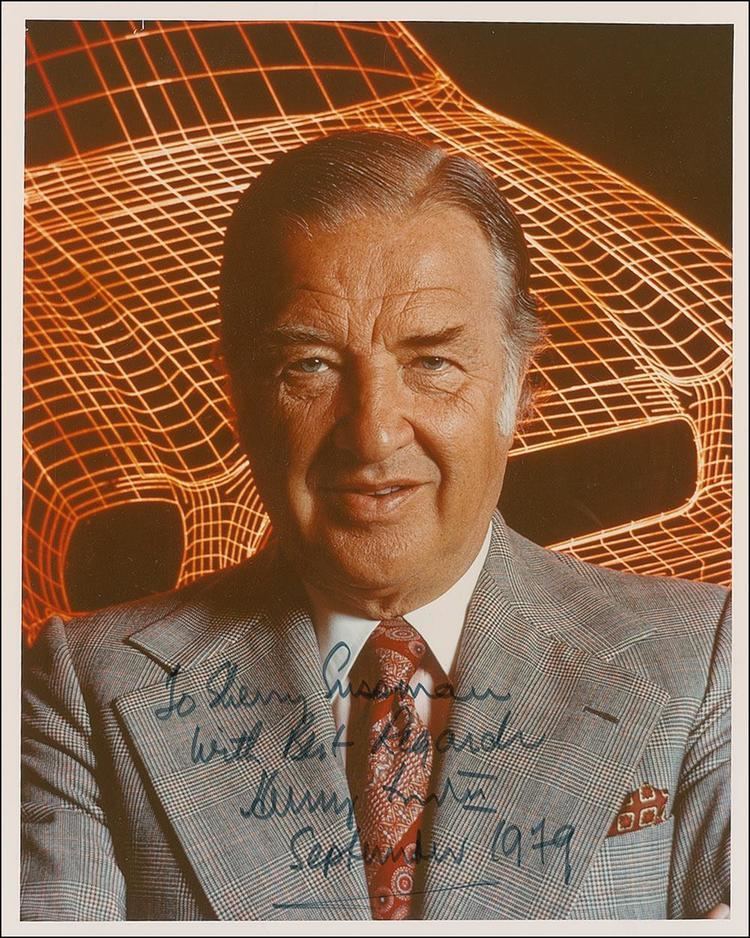 | ||
Spouse(s) Anne McDonnell, 1940–1964 (divorced)Maria Cristina Vettore, 1965–1980 (divorced)Kathleen DuRoss 1980–1987 (his death) Relations Henry Ford (grandfather)William Clay Ford, Sr. (brother)Edsel Ford II (son)Bill Ford (nephew)Josephine Ford (sister) Parents Edsel Ford, Eleanor Clay Ford Children Edsel Ford II, Charlotte Ford, Anne Ford Siblings William Clay Ford, Sr., Josephine Clay Ford, Benson Ford Similar People Edsel Ford, Henry Ford, Edsel Ford II, William Clay Ford - Sr, William Clay Ford - Jr | ||
Henry ford ii talks about the edsel
Henry Ford II (September 4, 1917 – September 29, 1987), sometimes known as "HF2" or "Hank the Deuce", was the eldest son of Edsel Ford and eldest grandson of Henry Ford. He was president of the Ford Motor Company from 1945 to 1960, chairman and chief executive officer (CEO) and chairman for several months thereafter. Notably, under the leadership of Henry Ford II, Ford Motor Company became a publicly traded corporation in 1956. From 1943 to 1950, he also served as president of the Ford Foundation.
Contents
- Henry ford ii talks about the edsel
- Henry ford ii ford motor company
- Early life
- Career
- Awards and achievements
- Personal life
- Filmography
- References
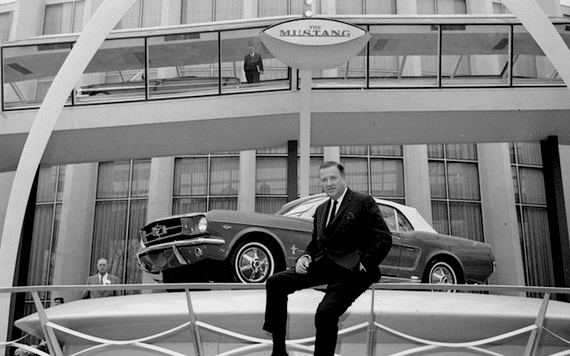
Henry ford ii ford motor company
Early life
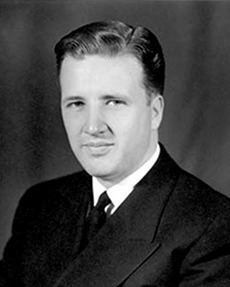
Henry Ford II was born in Detroit, Michigan, to Eleanor Clay Ford and Edsel Ford on September 4, 1917. He, brothers Benson and William, and sister Josephine, grew-up amid affluence. He graduated from The Hotchkiss School in 1936. He attended Yale University, where he served on the business staff of The Yale Record, the campus humor magazine, but left in 1940 before graduation.
Career
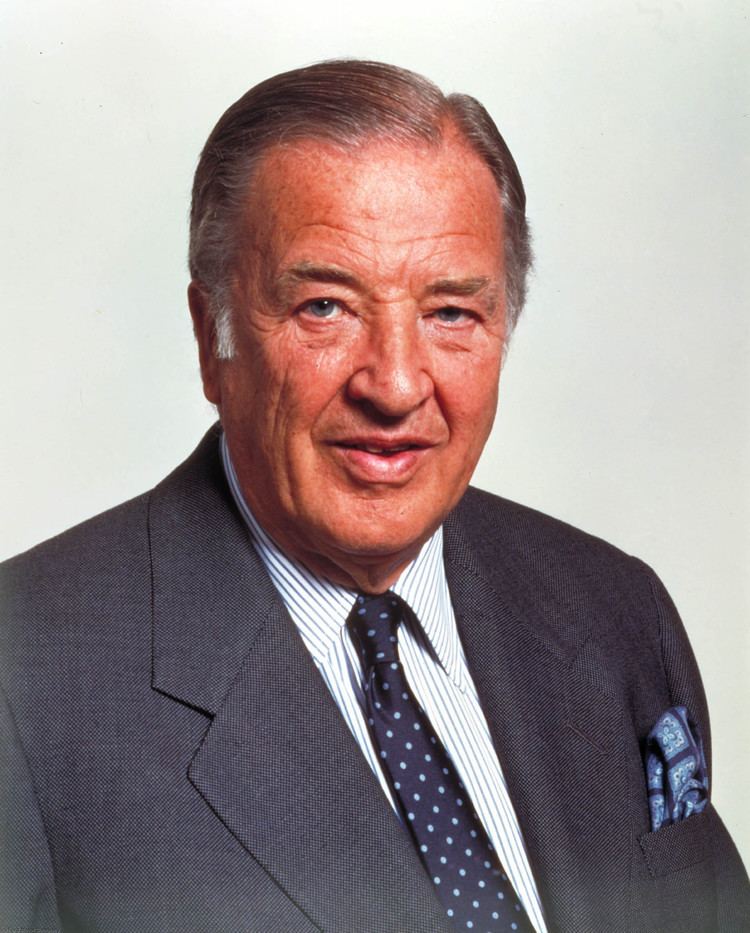
When his father Edsel, president of Ford, died of cancer in May 1943 (during World War II), Henry Ford II was serving in the Navy and unable to take over the presidency of the family-owned business. The elderly and ailing Henry Ford, company founder, re-assumed the presidency. By this point in his life, the elder Ford was mentally inconsistent, suspicious, and no longer fit for the job; most of the directors did not want to see him as president. But for the previous 20 years, although he had long been without any official executive title, he had always had de facto control over the company; the board and the management had never seriously defied him, and this moment was not different. The directors elected him, and he served until the end of the war. During this period the company began to decline, losing over $10 million a month. The administration of President Franklin D. Roosevelt had been considering a government takeover of the company in order to ensure continued war production, but the idea never progressed to execution.
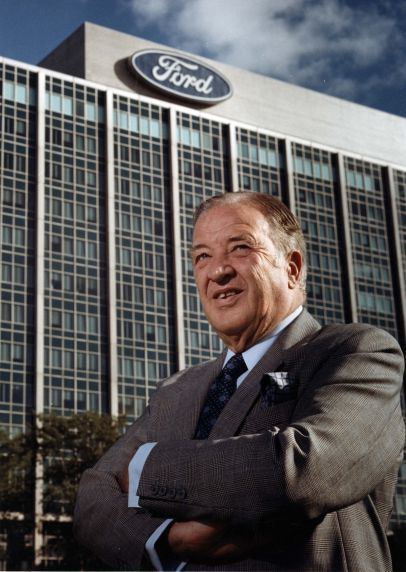
Henry Ford II left the Navy in July 1943 and joined the company's management a few weeks later. After two years, he assumed presidency of the business on September 21, 1945. Since it had been assumed that Edsel Ford would continue in his capacity as president of the company for much longer than turned out to be the case, Henry Ford II had received little grooming for the position, and he took over the company during a chaotic period; its European factories had suffered a great deal of damage during the war, and domestic sales were also in decline.

Henry Ford II immediately adopted an aggressive management style. One of his first acts as company president was to place John Bugas in charge of taking control of the company from its entrenched management and firing Harry Bennett, head of the Ford Service Department, whom his grandfather initially hired to stifle attempts at unionization. Next, acknowledging his inexperience, he hired several seasoned executives to support him. He hired former General Motors executives Ernest Breech and Lewis Crusoe away from the Bendix Corporation. Breech was to serve in the coming years as HF2's business mentor, and the Breech–Crusoe team would form the core of Ford's business expertise, offering much-needed experience.
Additionally, Henry Ford II hired ten young up-and-comers, known as the "Whiz Kids". These ten, gleaned from an Army Air Forces statistical team, Henry Ford II envisioned as giving the company the ability to innovate and stay current. Two of them, Arjay Miller and Robert McNamara, went on to serve as presidents of Ford themselves. A third member, J. Edward Lundy, served in key financial roles for several decades and helped to establish Ford Finance's reputation as one of the best Finance organizations in the world. As a team, the "whiz kids" are probably best remembered as the design team for the 1949 Ford, which they took from concept to production in nineteen months, and which re-established Ford as a formidable automotive company. It was reported that 100,000 orders for this car were taken the day it was introduced to the market.
Henry Ford II was president of Ford Motor Company from 1945 to 1960. In 1956, under his leadership, the company became a publicly traded corporation and dedicated its new world headquarters building. When he resigned the presidency, he became CEO of the company. During his term as CEO of Ford, he resided in Grosse Pointe, Michigan. On July 13, 1960, he was additionally elected Chairman; he resigned as CEO on October 1, 1979, and as Chairman in 1980. His nephew, William Clay Ford, Jr. would later assume these positions after 20 years of non-Ford family management of the company. During the interim, the family interests were represented on the board by Henry's younger brother William Clay Ford, Sr., as well as Henry's son Edsel Ford II and his nephew William Clay Ford, Jr.
During the early 1960s Henry Ford II engaged in lengthy negotiations with Enzo Ferrari to buy Ferrari, with a view to expanding Ford's presence in motorsport in general and at the Le Mans 24 Hours in particular. However negotiations collapsed due to disputes over control over Ferrari's racing division. The collapse of the deal led him to inaugurate the Ford GT40 project, intended to end Ferrari's dominance at Le Mans (the Italian marque won the race six consecutive times from 1960 to 1965). After two difficult years in 1964 and 1965, in 1966 GT40s locked out the podium at both the Daytona 24 Hours and the Sebring 12 Hours before taking the first of four consecutive wins at Le Mans.
In 1973 and 1974, as it became clear that the American car market would begin to favor smaller, more fuel-efficient cars, Ford's then-President Lee Iacocca was highly interested in buying powertrains from Honda Motor Company as a way to minimize the cost of developing a small Ford car for the North American market, such as a modified version of Ford of Europe's Ford Fiesta. The plan was rejected by Henry Ford II, who stated: "No car with my name on the hood is going to have a Jap engine inside." Although, strictly speaking, it was too late for that, as the Ford Motor Company had been selling a Mazda compact pickup truck as the Ford Courier since late 1971, Henry Ford II did not like the idea of flagship North American passenger car models moving in that direction. Ford Motor Company did go on to adapt to the era in which Japanese, German, and American participation in a globalized automobile industry became tightly integrated. For example, Ford's relationship with Mazda was well developed even before the end of HF2's period of influence. However, in Iacocca's view, it lagged several years behind GM and Chrysler, due to Henry Ford II's unappealable influence, before others led it forward despite his resistance.
HF2's management style caused the company's fortunes to fluctuate in more ways than one. For example, he allowed the offering of public stock in 1956, which raised $650 million for the company, but the "experimental car" program instituted during his tenure, the Edsel, cost the company almost half that. Likewise, HF2 hired the creative Lee Iacocca, who was fundamental to the success of the Ford Mustang, in 1964, but fired Iacocca due to personal disputes in 1978 (about the break in their relationship, Iacocca quoted Ford as saying, "Sometimes you just don't like somebody"). He formally retired from all positions at Ford Motor Company on October 1, 1982, upon reaching the company's mandatory retirement age of 65, but remained the ultimate source of authority at Ford until his death in 1987.
Awards and achievements
Personal life
Henry Ford II was married three times:
Ford died of pneumonia in Detroit at Henry Ford Hospital on September 29, 1987, at age 70. After a private funeral service at Christ Church Grosse Pointe, his remains were cremated and the ashes scattered.
